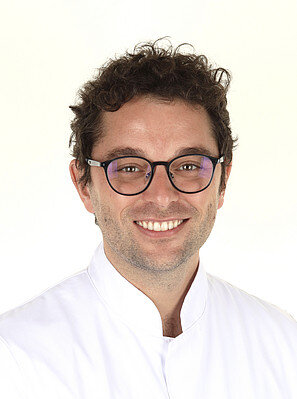The International Journal of Prosthodontics, 7/2024
Open Access Supplement Online OnlyDOI: 10.11607/ijp.8847, PubMed-ID: 38498865Seiten: s133-s141, Sprache: EnglischYılmaz, Deniz / Çakmak, Gülce / Güven, Mehmet Esad / Pieralli, Stefano / Yoon, Hyung-In / Revilla-León, Marta / Yilmaz, BurakPurpose: To evaluate the flexural strength (FS) and microhardness of various CAD/CAM restorative materials intended for definitive use. The effect of hydrothermal aging on the mechanical properties of these materials was also investigated. Materials and Methods: A total of 210 bar-shaped specimens (17 × 4 × 1.5 mm ± 0.02 mm) were fabricated via either subtractive manufacturing (SM) methods—reinforced composite resin (SM-CR), polymer-infiltrated ceramic network (SM-PICN), fine-structured feldspathic ceramic (SMFC), nanographene-reinforced polymethyl methacrylate (PMMA; SM-GPMMA), PMMAbased resin (SM-PMMA)—or additive manufacturing (AM) methods with urethane acrylate–based resins (AM-UA1 and AM-UA2). Specimens were then divided into two subgroups (nonaged or hydrothermal aging; n = 15). A three-point flexural strength test was performed, and five specimens from the nonaged group were submitted to microhardness testing. Specimens were subjected to 10,000 thermal cycles, and the measurements were repeated. Results: Regardless of aging, SM-CR had the highest FS (P < .001), followed by SM-GPMMA (P ≤ .042). In nonaged groups, AM-UA2 had a lower FS than all other materials except SM-FC (P = 1.000). In hydrothermal aging groups, AM specimens had lower FS values than other materials, except SM-PMMA. With regard to microhardness, there was no significant difference found between any of the tested materials (P ≥ .945) in the nonaged and hydrothermal aging groups. Conclusions: The effect of hydrothermal aging on FS varied depending on the type of restorative material. Regardless of aging condition, SM-CR showed the highest FS values, whereas SM-FC had the highest microhardness. Hydrothermal aging had no significant influence on the microhardness of the tested materials.
Quintessence International, 7/2022
DOI: 10.3290/j.qi.b2793271, PubMed-ID: 35274517Seiten: 608-614, Sprache: EnglischSchmid, Claudio / Lotz, Martin / Pieralli, Stefano / Valdec, SilvioThis case report presents a novel approach for minimally invasive fully guided apicoectomy of the palatal root of a maxillary first molar using a custom-made 3D-printed template. To date, the development of diagnostic radiographic tools such as high-resolution CBCT devices, as well as of CAD planning software and CAM technologies, like 3D printing, allow for increased application in endodontics. The patient (a 38-year-old woman) suffered from pain on the right side of the face since 4 weeks and was diagnosed with chronic apical periodontitis of the palatal root of the maxillary right first molar. The root treatment of this tooth was followed up recently and the buccal roots showed no pathologic findings. A guided apicoectomy with access from the palate was chosen as elective therapy. 3D radiographic and intraoral surface datasets were imported into an implant planning software and superimposed, and minimally invasive access to the palatal root apex was planned. Subsequently, a tooth-supported drilling template was designed and created by additive manufacturing. A flapless approach was adapted using a punch-drill and the access to the root apex as well as the apical resection were performed with a trephine drill. The connective tissue punch was finally replaced and sutured. No postoperative complication was reported and a complete remission of symptoms was reported after 2 weeks. The follow-up after 21 months showed clinically stable wound conditions and radiologically a slight reossification in the area of the palatal root tip. The presented technique may lead to novel minimally invasive approaches for the preservation of infected maxillary molars.
Schlagwörter: CAD/CAM, digital planning, drilling template, guided apicoectomy, guided surgery, 3D printing
The International Journal of Prosthodontics, 2/2019
DOI: 10.11607/ijp.6126, PubMed-ID: 30856651Seiten: 214-216, Sprache: EnglischPieralli, Stefano / Gintaute, Aiste / Beuer, Florian / Spies, Benedikt ChristopherPatients presenting both severe maxillary atrophy and dental malposition require a multidisciplinary treatment approach to achieve optimal esthetic and functional results. This case history report demonstrates how digital treatment planning and teeth set-up can serve as a reference for surgical, orthodontic, and prosthodontic procedures, leading to an all-ceramic full-arch implant-supported fixed prosthesis.




